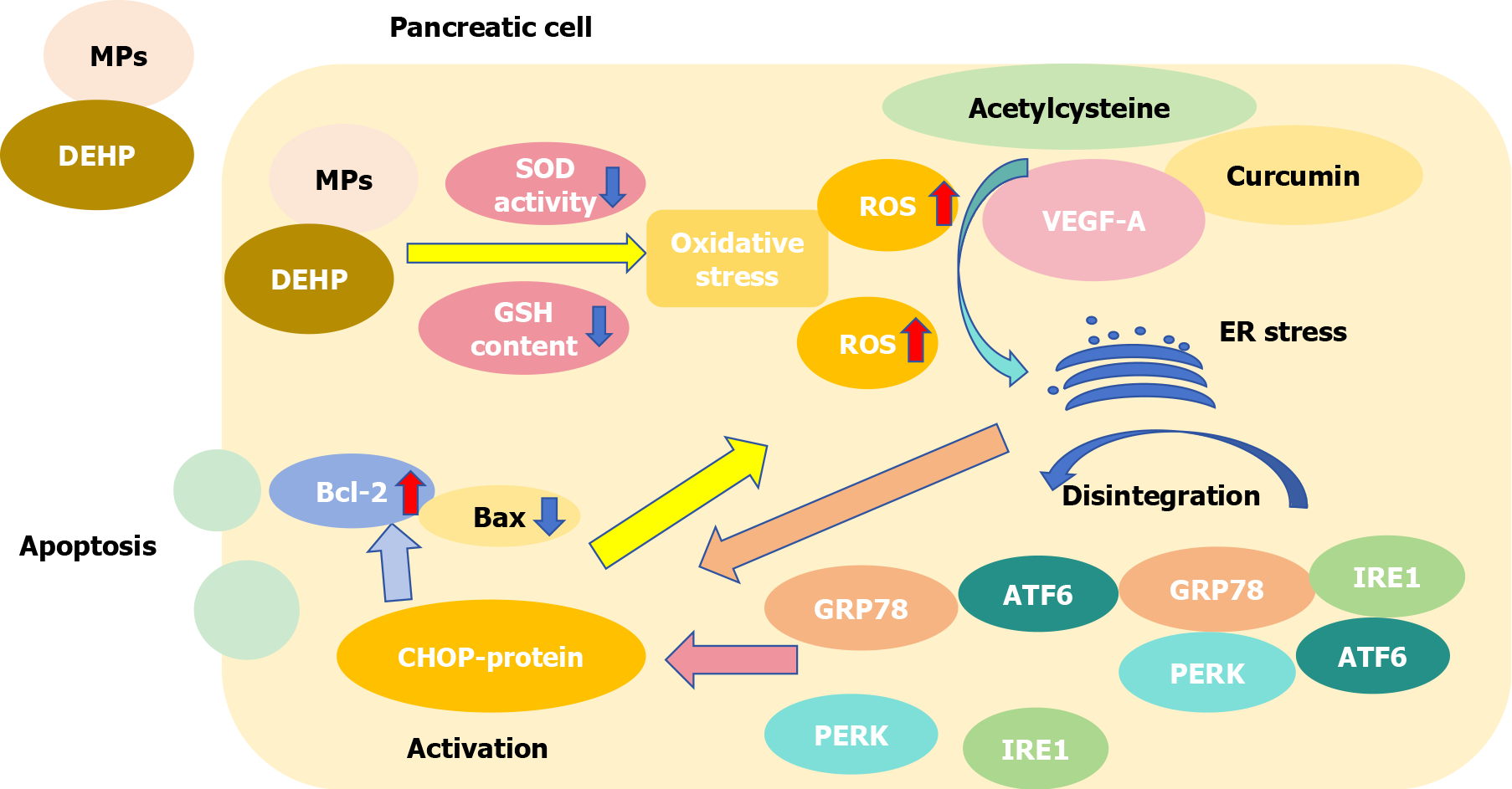Copyright
©The Author(s) 2025.
World J Gastroenterol. Jan 28, 2025; 31(4): 100470
Published online Jan 28, 2025. doi: 10.3748/wjg.v31.i4.100470
Published online Jan 28, 2025. doi: 10.3748/wjg.v31.i4.100470
Figure 7 Damage from the combination of microplastics and di(2-ethylhexyl) phthalate to pancreatic cells through glucose-regulating protein 78/C/EBP homologous protein/Bcl-2 pathway.
The combination of di(2-ethylhexyl) phthalate and microplastics can induce oxidative stress and produce a large number of reactive oxygen species. Endoplasmic reticulum stress can be caused by various intracellular substances through reactive oxygen species. After stress, complexes formed by glucose-regulating protein 78, inositol-requiring enzyme 1, protein kinase RNA-like ER kinase, and activating transcription factor 6 on the endoplasmic reticulum can be disintegrated, thus promoting the activation of C/EBP homologous protein. Activation of C/EBP homologous protein can aggravate oxidative stress, but also promote the expression of apoptotic genes and induce apoptosis. MPs: Microplastics; SOD: Superoxide dismutase; DEHP: Di(2-ethylhexyl) phthalate; GSH: Glutathione; ROS: Reactive oxygen species; VEGF-A: Vascular endothelial growth factor A; ER: Endoplasmic reticulum; CHOP: C/EBP homologous protein; GRP78: Glucose-regulating protein 78; ATF6: Activating transcription factor 6; IRE1: Inositol-requiring enzyme 1; PERK: Protein kinase RNA-like ER kinase.
- Citation: Wang YF, Wang XY, Chen BJ, Yang YP, Li H, Wang F. Impact of microplastics on the human digestive system: From basic to clinical. World J Gastroenterol 2025; 31(4): 100470
- URL: https://www.wjgnet.com/1007-9327/full/v31/i4/100470.htm
- DOI: https://dx.doi.org/10.3748/wjg.v31.i4.100470









